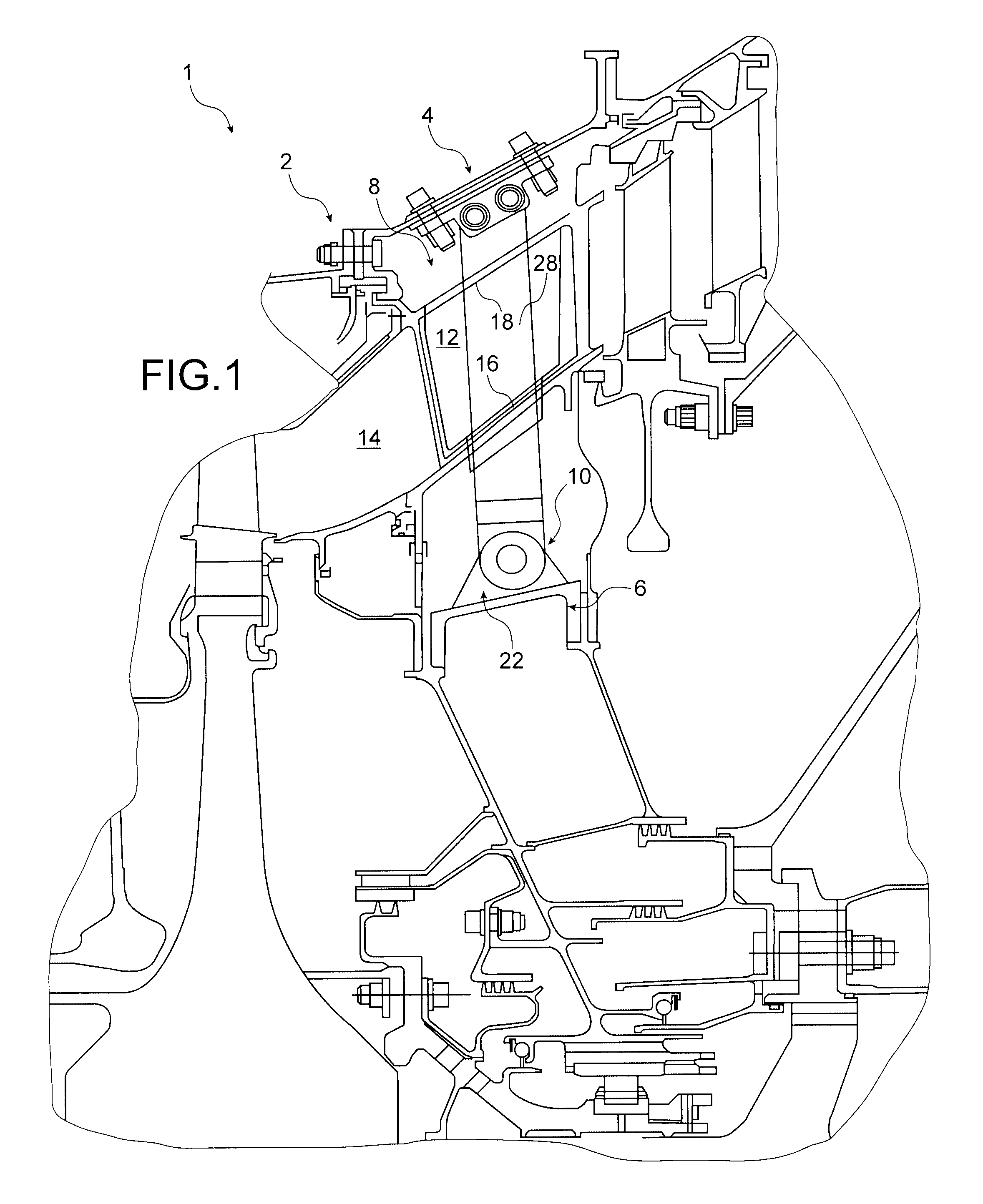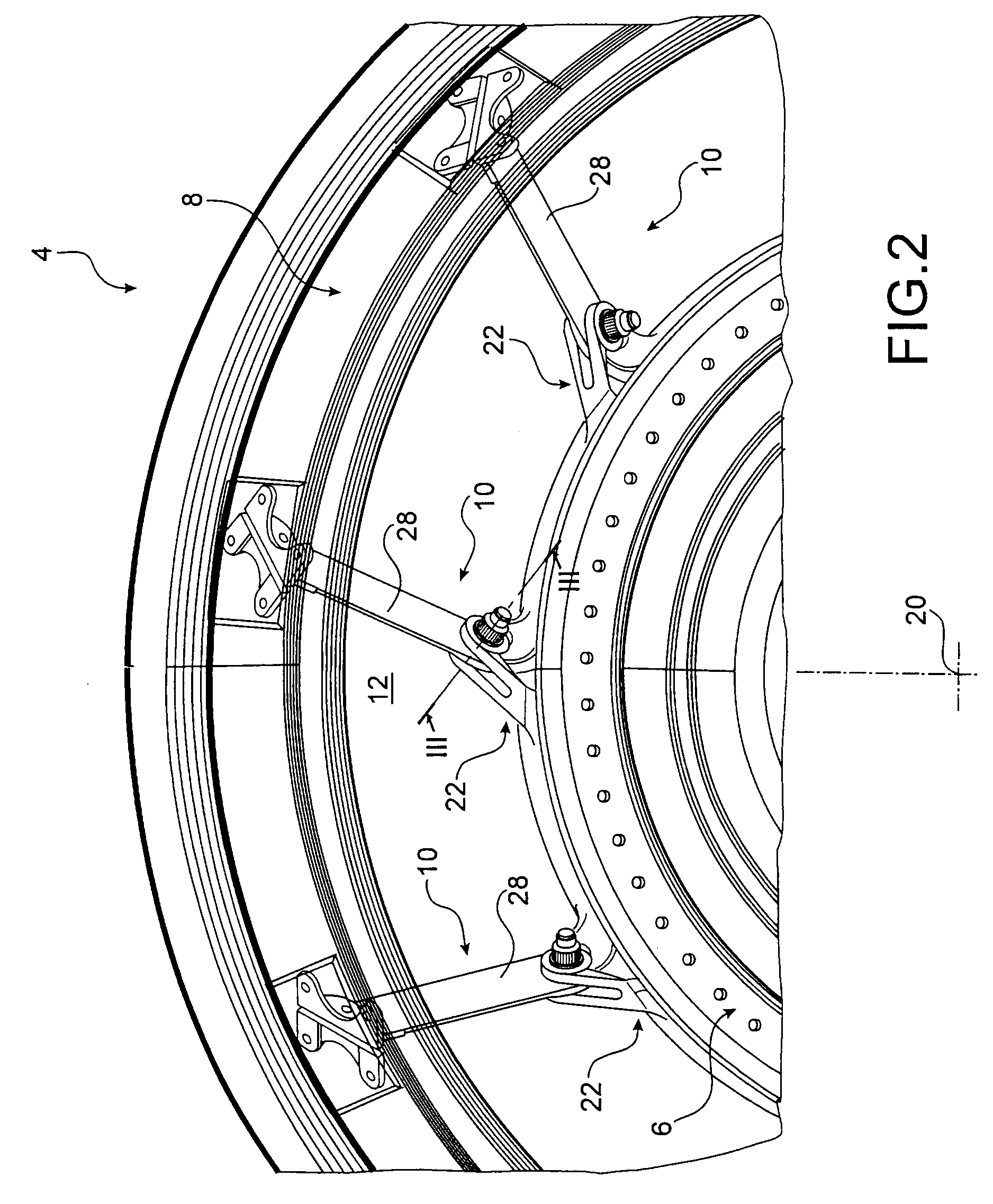Joining device for joining two assemblies, for example for a stator of a turbomachine
a technology of joining device and assembly, which is applied in the direction of machines/engines, couplings, liquid fuel engines, etc., can solve the problems of difficult, if not impossible, assembly by operators, and the possibility of bringing the connecting member, so as to avoid the detrimental bending effect, precise relative positioning, and accurate final positioning of the connecting member
- Summary
- Abstract
- Description
- Claims
- Application Information
AI Technical Summary
Benefits of technology
Problems solved by technology
Method used
Image
Examples
Embodiment Construction
[0042]FIG. 1 shows part of a turbomachine 1 according to one preferred embodiment of the present invention and, more particularly, a turbomachine module 2 which in this instance is a high-pressure or HP turbine of the turbomachine, which for its part is in the form of an aircraft turbojet engine.
[0043]The module 2 comprises a stator partially composed of a joint 4 which also forms part of the subject of the present invention, this joint 4 in general comprising a first assembly 6 and a second assembly 8 which are annular and concentric about an axis of the turbomachine (not depicted) which also corresponds to the axis of these assemblies 6, 8. As will be detailed hereinbelow, the assemblies 6, 8 are fixedly attached to one another by a number of joining devices 10 spaced circumferentially apart, uniformly, also termed as “cyclically”.
[0044]As is visible in FIG. 1, the first and second assemblies 6, 8 between them define an annular space 12 forming a transverse portion of the primary ...
PUM
 Login to View More
Login to View More Abstract
Description
Claims
Application Information
 Login to View More
Login to View More - R&D
- Intellectual Property
- Life Sciences
- Materials
- Tech Scout
- Unparalleled Data Quality
- Higher Quality Content
- 60% Fewer Hallucinations
Browse by: Latest US Patents, China's latest patents, Technical Efficacy Thesaurus, Application Domain, Technology Topic, Popular Technical Reports.
© 2025 PatSnap. All rights reserved.Legal|Privacy policy|Modern Slavery Act Transparency Statement|Sitemap|About US| Contact US: help@patsnap.com



